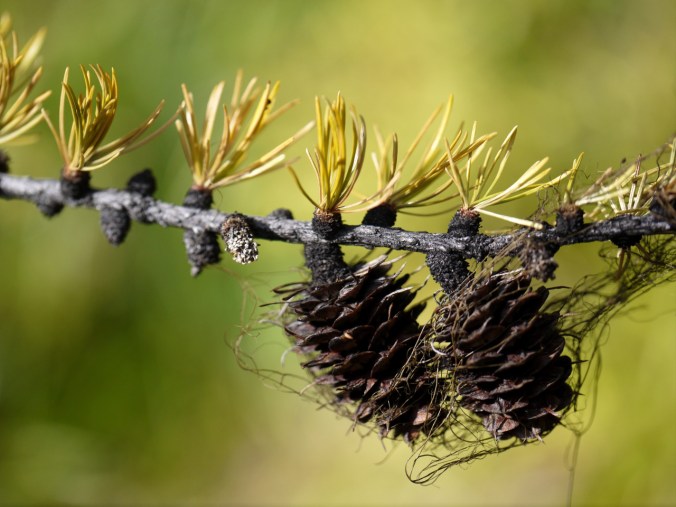Bryoria fremontii “Wila/Black Tree Lichen”
Rattlesnake National Recreation Area, MT
October 24, 2015
Robert Niese
This lichen was a staple food source for about 20 different native groups (mostly Salish) of people here in the eastern PNW. Wila (which is the Secwepemctsín or Shuswap word for this lichen) grows abundantly here in our Ponderosa Pinelands, coating old trees from crown to floor in dangling blackish hair. No other species in the PNW east of the Cascades achieves quite as much biomass as B. fremontii (up to 3000kg per hectare!). Interestingly, like several other species of edible lichen in our region (e.g. Letharia), some regions have populations with high levels of vulpinic acid which is toxic when ingested in large quantities. It can be nearly impossible to tell these two chemotypes apart visually, and yet the vast majority of the tribes that subsisted on these lichens had to make the distinction daily.

